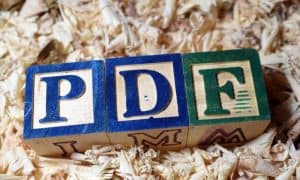How to Fix Mac Not Seeing External Drive
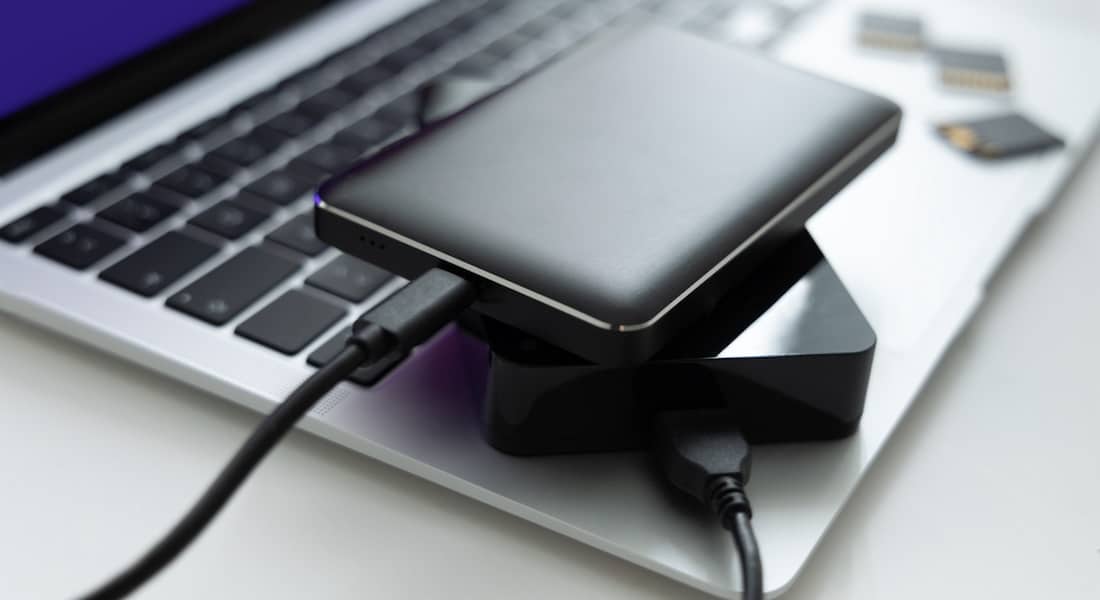
Got an external drive that your Mac isn’t seeing or doesn’t know how to talk to? We’ve got some tips to make them friendly again.
Ah, external hard drive—the trusty sidekicks to our Macs, faithfully storing our ever-growing collection of cat videos and memes. But what happens when your Mac suddenly acts like it’s never seen your hard drive before? Fear not, for I shall guide you through the digital wilderness to fix things when your Mac isn’t seeing your external drive.
’Is It Me You’re Looking For?’ — Understanding Why Your Hard Drive is MIA
Your first step needs to be to make sure your external drive isn’t just playing a game of hide-and-seek. In other words, it may be that the Mac sees the external drive just fine but hasn’t mounted it for some reason.
To check if the drive is mounted, you’ll need to fire up the trusty Disk Utility tool.
How to Look for That Missing Hard Drive in Disk Utility
- Open Spotlight, type
Disk Utility, and press Return. - If your external hard drive shows up here, you’re in luck. First, click Mount.


- If the drive fails to mount, click First Aid to give it a little TLC by trying to repair it.

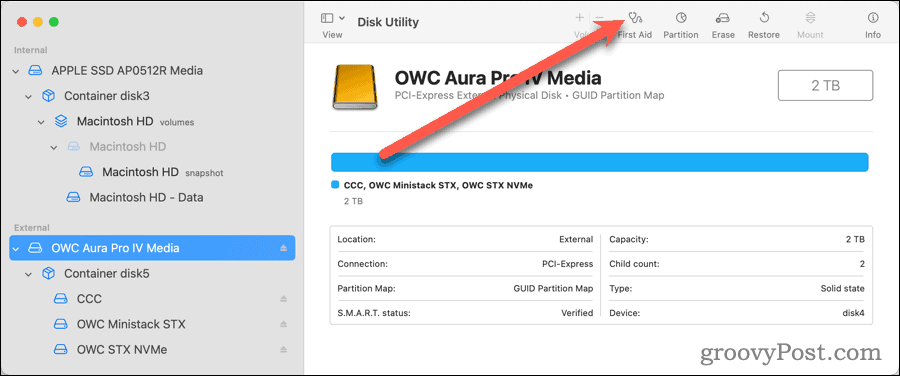
- Try mounting the external drive again. If it still fails, read on for more troubleshooting tips.
Your hard drive might be playing hide and seek for a few reasons. If it shows up in Disk Utility and is mounted, you may just need to tell Finder to show it to you.
How to Make Finder Display External Drives
This is another easy fix, assuming it’s what’s at fault. You just need to change your Finder preferences to show external drives.
- Open Finder, either by clicking the smiling Mac face in the Dock or just clicking an empty spot on the desktop.
- From the left corner of the menu bar, click Finder > Settings.
- In the General tab, be sure External disks are checked if you want the drive to display on your desktop.

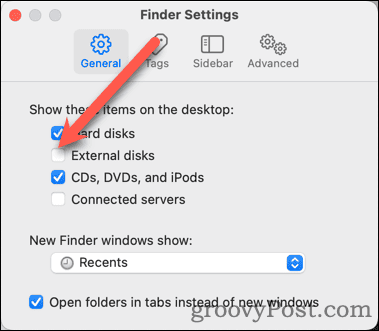
- If you want to see the external drive in the Finder sidebar, click the Sidebar tab and make sure to check External disks under Locations.

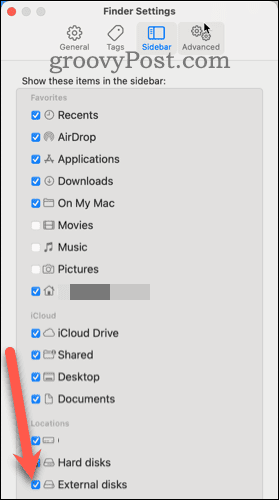
Hopefully, you’ll see your external drive after those steps. If not, read on.
Troubleshooting Stubborn Drives That Refuse to Come Out of Hiding
If using Disk Utility to mount or repair the drive doesn’t help, and it’s not a matter of your Finder preferences, we’ve got a few more issues that might be at play. These are usually easy to fix, but you’ll have to narrow down what’s happening first.
- Power Play: Your external drive requires power, which it pulls from the USB or Thunderbolt port it’s plugged into. If your hard drive isn’t getting enough juice, it’s going to nap instead of work. You can test this by plugging the drive into a different USB/Thunderbolt port on your Mac or a powered USB hub.
- Cable Capers: A sneaky cable might be pretending to connect when it’s just lazing around. Try replacing the cable, and that might cure things right up.
- Format Faux Pas: Maybe your hard drive speaks Windows (NTFS) while your Mac only understands macOS (HFS+ or APFS).
- Drive Drama: Your hard drive might be going through a phase, aka it’s corrupted or just plain faulty. If it’s corrupted, the First Aid attempt I listed above should help.
Let’s look at the formatting issue first. If that external drive came from the World of Windows, there’s a good chance it was formatted as an NTFS drive.
How to Reformat Your External Drive to be Mac-Friendly
Luckily, even if the drive is formatted as something your Mac can’t read, you should be able to reformat it to be Mac-friendly.
- First, if there’s data on the external drive you need to save, back up those files to a Windows computer.
- Next, plug the drive into your Mac again and launch Disk Utility.
- Click the drive in the sidebar, then click Erase. You can also right-click the drive and choose Erase from the contextual menu.

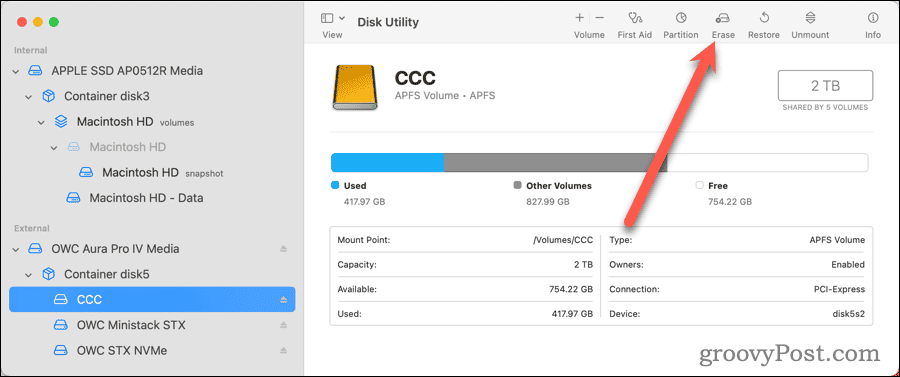
- In the Erase dialog, click the dropdown menu beside Format. If you want to swap the drive between Mac and Windows, choose ExFat for the format. Otherwise, you can use APFS, macOS Extended, or any other format you want.

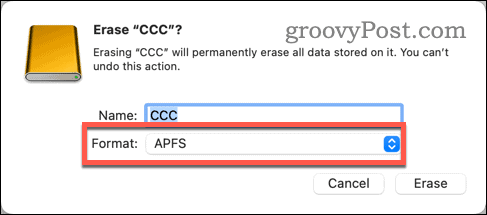
- If you want, give your external drive an appropriate name. When done, click Erase.
If everything is otherwise fine with the external drive, it should show right up on your Mac from now on. If it held data previously, eject the drive and plug it back into your Windows PC to restore those files.
Bonus Tips for Pesky Problems with External Drives
Sometimes, unfortunately, the steps above won’t help. There are a couple more options to check into, though.
- Power Check: If your drive needs more power, try a USB-Y cable. This type of cable allows you to plug your drive into two USB ports at the same time, doubling the power it receives. You should also check the drive’s external power supply to see if it has one.
- NVRAM Reset: For older Macs, resetting the NVRAM can be like a mini spa day for your Mac’s memory. Do this by rebooting your Mac and pressing Command+Option+P+R as soon as you hear the startup sound.
- If your Mac has Apple silicon (M1, M2, etc.), a simple reboot will handle this. No keyboard shortcut required!
Final Thoughts: Embrace the External
Having an external hard drive is like having a digital attic — great for storage but sometimes a bit tricky to access. If your Mac is giving your external hard drive or SSD the silent treatment, remember, it’s not you, it’s technology. With some patience, some cable wiggling, and a few clicks, you’ll have them chatting like old friends in no time!
Leave a Reply
Leave a Reply








